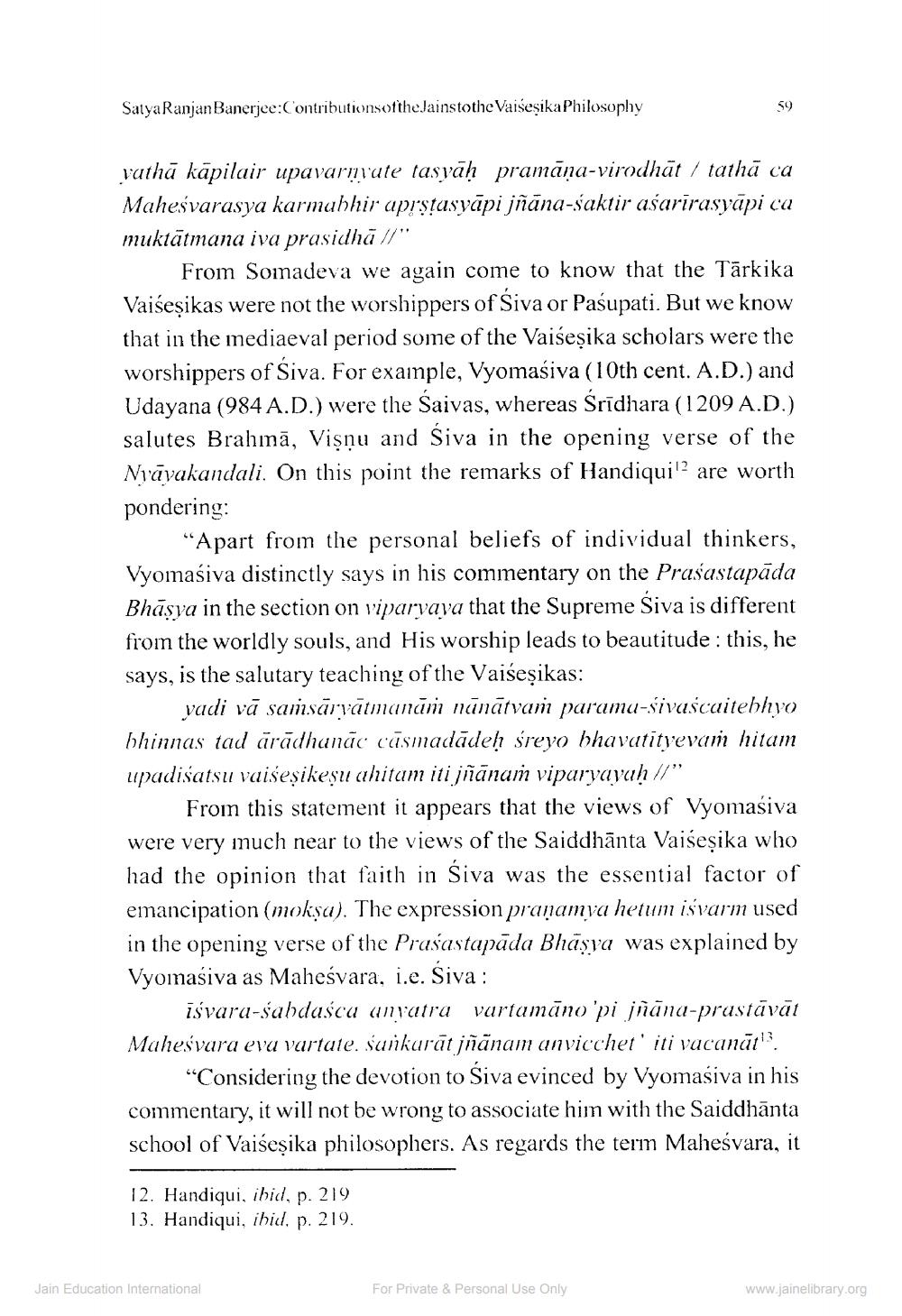________________
Satya Ranjan Banerjee:Contributionsofthe Jainstothe VaiseşikaPhilosophy
vathā kāpilair upavarnute tasyāḥ pramāņa-virodhāt / tathā ca Mahesvarasya karmabhir aprstasyāpi jñāna-saktir asarirasyāpi ca muktātmana iva prasidhā //"
From Somadeva we again come to know that the Tärkika Vaišeșikas were not the worshippers of Siva or Pasupati. But we know that in the mediaeval period some of the Vaišeșika scholars were the worshippers of Siva. For example, Vyomasiva (10th cent. A.D.) and Udayana (984 A.D.) were the Saivas, whereas Śrīdhara (1209 A.D.) salutes Brahmā, Vişnu and Siva in the opening verse of the Nvāyakandali. On this point the remarks of Handiqui 2 are worth pondering:
“Apart from the personal beliefs of individual thinkers, Vyomasiva distinctly says in his commentary on the Prasastapāda Bhāsya in the section on viparvava that the Supreme Siva is different from the worldly souls, and His worship leads to beautitude: this, he says, is the salutary teaching of the Vaiseșikas:
vadi vā samsārvātmanām mūnātvam paramu-sivascaitebhyo bhinnas tad ārādhando cūsmadādeh śreyo bhavatītyevam hitam upadisatsu vaiseșikeșu ahitum iti jñānam vipuryayuh //"
From this statement it appears that the views of Vyomasiva were very much near to the views of the Saiddhānta Vaišeșika who had the opinion that faith in Siva was the essential factor of emancipation (moksu). The expression prasamva hetum isvarm used in the opening verse of the Prasastapāda Bhāsva was explained by Vyomasiva as Maheśvara, i.e. Siva :
īśvara-sabdaścu anpatra vartamāno 'pi jñāna-prustāvāt Mahesvara evu vartate, sunkurāt jñānam anvicchet' iti vacanūt!?
“Considering the devotion to Siva evinced by Vyomasiva in his commentary, it will not be wrong to associate him with the Saiddhānta school of Vaišeșika philosophers. As regards the term Mahesvara, it
12. Handiqui, ibid, p. 219 13. Handiqui, ibid, p. 219.
Jain Education International
For Private & Personal Use Only
For Private & Personal Use Only
www.jainelibrary.org




